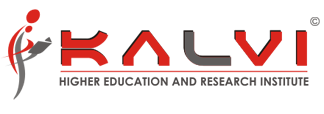COURSE DESCRIPTION: This course brings together graphics and text to create professional level publications. Students create, format, illustrate, design, edit/revise, and print publications. Improved productivity of digitally produced newsletters, flyers, brochures, reports, advertising materials, and other publications is emphasized. Proofreading, document composition, and communication competencies are also included. PREREQUISITE: Keyboarding and Computer Applications SOFTWARE: Msoffice,Adobe Photoshop,Corel draw and Adobe indesign COURSE OBJECTIVES: The student will be able to: A. UNDERSTANDING TECHNOLOGY 1. Define desktop publishing. 2. Demonstrate an understanding of the basic hardware components needed for desktop publishing and input/output devices. 3. Demonstrate an understanding of the basic software needed for desktop publishing. B. DESIGN PRINCIPLES 1. Demonstrate effective use of color. 2. Use color tables (e.g., hue and saturation). 3. Demonstrate effective use of type fonts. 4. Demonstrate effective use of clip art and other graphics in publications. 5. Explain the term "effective white space." C. DIGITAL IMAGING 1. Define various types of graphic file formats. 2. Acquire digital image from sources such as scanner, digital cameras, Internet, etc. 3. List factors that affect quality imaging. 4. Edit a digital image. 5. Convert various graphic file formats. D. CREATING AND DESIGNING LAYOUT 1. Define terms in the design process: thumbnails, rough drafts, and comprehensive layout (comp). 2. Define terms related to artwork such as line art, continuous tone, halftone, halftone screen, cropping, scaling, vector and raster graphics, and resolution. 3. Define terms related to typography: screen/printer fonts, downloadable (soft) fonts, typesetting, galleys, postscript printers, serifs, points, picas, alignment of text, drop shadows, leading, tracking, and kerning. 4. Convert elements (logos, body copy, charts, and graphs) from standard business applications into compatible format (e.g., psd, png, bmp, pdf, gif, jpeg, and tiff) for use in desktop publishing projects. 5. Proofread, edit, and revise text using standard proofreading symbols. E. PRODUCING OF DOCUMENTS 1. Determine the most appropriate type of desktop publication based upon the purpose, intended audience, life of the publication, cost limits, and time constraints. 2. Plan printed presentations of text by determining appropriate typography, spacing elements, and emphasis features. 3. Design a layout for readability and attractiveness by use of effective white space, column position and spacing, page margins, and graphics placement (boxes, lines, illustrations, images, etc.). 4. Develop a desktop publication including original graphics created using drawing and paint tools. 5. Generate a variety of documents such as flyers, bulletins, proposals, reports, business cards, greeting cards, transparencies, brochures, handouts, information forms, etc. 6. Import text and tables from a word processing program into a desktop published document. 7. Import charts and/or tables from a spreadsheet software program into a desktop published document. 8. Import charts and/or tables from a database software program into a desktop published document. 9. Incorporate original scanned digitized graphics/text files into a desktop publication. 10. Incorporate original digital camera image into a desktop publication. F. PRINTING THE DOCUMENTS 1. Select appropriate printer. 2. Adjust printer/publication for desired output. 3. Describe characteristics and uses of basic color models (e.g., RGB, CMYK, etc.). 4. Explain preprint color requirements. 5. Describe the purpose and process of color separation. 6. Perform color separations. G. DEVELOPING A DESKTOP PUBLISHING PORTFOLIO 1. Identify careers in the desktop publishing field. 2. Explain the purpose of portfolios and how to select the pieces to include in the portfolio. 3. Create a résumé to include in the portfolio. 4. Assemble a career portfolio of a variety of printed documents produced in the course, including a flyer, a newsletter, a brochure, business cards, a letterhead, an advertisement, labels, and information forms.

